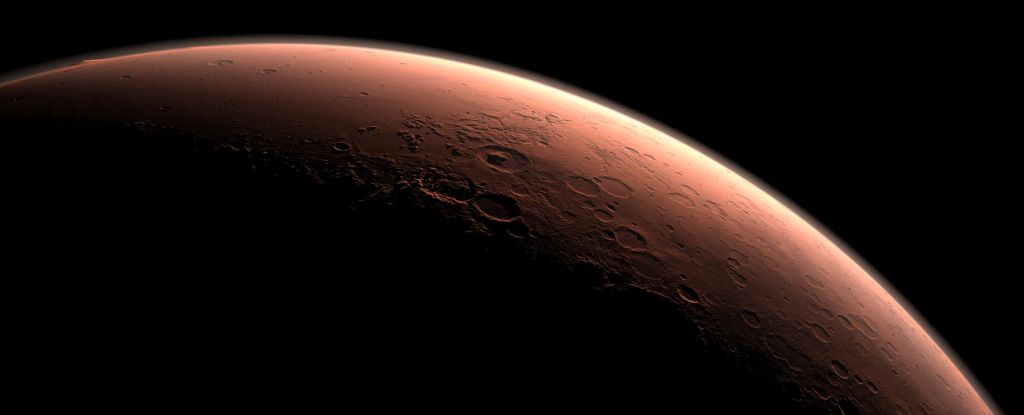A massive, record-breaking earthquake that shook Mars in May this year was at least five times larger than the previous record holder, new research has found.
It’s unclear what the source of the quake was, but it was definitely peculiar. Not only was it the strongest tremor ever recorded on Mars, it was also by far the longest, shaking the red planet for 10 hours.
“The energy released by this single marsquake is equal to the cumulative energy of all other marsquakes we’ve seen so far,” says seismologist John Clinton from the Swiss Federal Institute of Technology, “and although the event was over 2000 kilometers (1200 miles) away, the waves recorded by InSight were so large that they almost saturated our seismometer.”
The new analysis of the quake, published in Geophysical Research Letters, set its magnitude to 4.7. The previous record holder was a magnitude 4.2 earthquake Discovered August 2021.
That might not sound like a big quake by Earth standards, where the strongest quake ever recorded reached a magnitude of about 9.5. But for a planet that was thought to be seismically inactive until NASA’s InSight probe began mapping its interior in early 2019, that’s impressive.
Although Mars and Earth have a lot in common, there are some really crucial differences. Mars has no tectonic plates; nor does it have a coherent, global magnetic field, which is often interpreted as a sign that not much is happening inside Mars, since Earth’s magnetic field is theoretically the result of internal thermal convection.
InSight has shown that Mars is not as seismically quiet as we previously thought. It creaks and rumbles and hints volcanic activity under the Cerberus fossae region where the InSight lander crouches and surveys the hidden innards of the planet.
But determining the activity status of Martian interior is not the only reason to monitor marsquakes. The way seismic waves propagate through and across a planet’s surface can help reveal variations in its interior density. In other words, they can be used to reconstruct the structure of the planet.
This is usually done Here on earthbut hundreds of tremors recorded by InSight have enabled scientists to build one Map of the interior of Marsto.
The May tremor may have been just a seismic event, but it appears it was an important one.
“For the first time, we have been able to identify surface waves traveling along the crust and upper mantle that have circled the planet multiple times,” Clinton says.
In two other, separate papers in Geophysical Research Lettersteams of scientists have analyzed these waves to try to understand the structure of the crust on Mars and to identify regions of sedimentary skirt and possible volcanic activity inside the crust.
But there’s more to do with the quake itself. First, it was from nearby, but not in the Cerberus Fossae region, and could not be traced back to any obvious surface features. This suggests it could be related to something hidden beneath the crust.
Second, Marsquakes are usually either high or low frequency, with the former characterized by rapid, brief tremors and the latter by longer, deeper waves with larger amplitudes. This quake combined both frequency ranges, and researchers aren’t exactly sure why. However, it is possible that previously recorded high- and low-frequency marsquakes analyzed separately are two parts of the same seismic event.
This could mean scientists need to rethink how marsquakes are understood and analyzed, and unveil even more mysteries hiding beneath the deceptively calm surface of Mars.
“It was definitely the biggest marsquake we’ve ever seen,” says planetary researcher Taichi Kawamura from the Paris Globe Institute of Physics in France.
“Stay tuned for more exciting things to come afterward.”
The research was published in Geophysical Research Letters.





